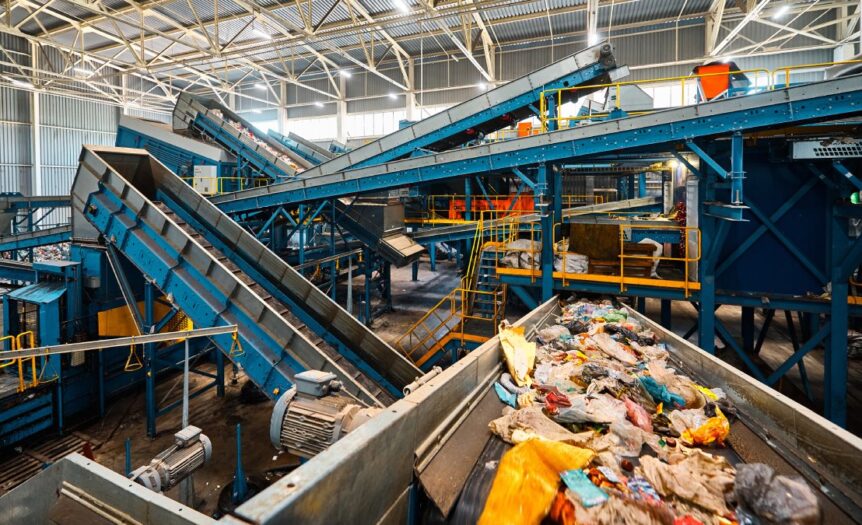Monitoring and reducing waste are always great business practices. Most likely you already have several steps in place to reuse and recycle some waste, but there’s always more one can do. Employing technology will help you achieve better control of your waste production, including the use of AI, IoT, and other techniques. Here’s a quick look at the role of technology in managing waste generation to tackle waste management effectively and responsibly.
Waste Management Technology
Technology helps transform waste management from a reactive to a proactive process. With the right tools, businesses can minimize waste while maximizing resource efficiency. Ultimately this improves any business’s bottom line with the positive side effect of aiding the environment. Employ the following tech to reduce costs while improving efficiency.
Key Tech Solutions for Waste Management
Automation and IoT
You’ve likely heard of the Internet of Things (IoT) by now—a network of electronic devices that connect with one another and exchange data. With waste management, it refers to devices like smart bins that contain sensors that monitor the amount of waste they contain and issue alerts. Knowing how much waste a business generates helps them better plan for collection, scheduling pickups only when they are really needed. This reduces the number of trips taken by the collectors, saving time, energy, and unnecessary expense.
Data Analytics
Technology thrives on data. Conducting waste audits and compiling data on the amount and kinds of waste you generate produces data you can use to determine more efficient ways to handle your trash. Collecting information on types of waste, the volume, the sources, and so on helps identify opportunities for reduction, optimization, and cost-cutting measures. More advanced data analytics are terrific at looking into the future to determine potential future waste generation, allowing you to plan ways to reduce that waste…before it even exists!
Blockchain
Blockchain is one of those buzzwords that keeps popping up in business, but what exactly does it mean? Blockchain is defined as a database or ledger shared across a computer network’s, ensuring that you know where a certain piece of data came from, who handled it, where it ends up, and so forth every step of the way. Applying this to waste management, waste may be traced from where it originated to its last stop, whether that’s the landfill, recycling center, or elsewhere. Ensure compliance with regulations about waste disposal and identify weak links in the process.
AI and Machine Learning
AI is another word that gets thrown around a lot nowadays. It means artificial intelligence, and while it’s more commonly touted as a way to generate images and text, it’s better defined as a way to find new answers to old questions through pure information processing. AI-backed waste management systems can be adopted to identify, sort, and separate waste into what is useless and what is useful. AI systems constantly learn and adapt, which can reduce downtime, predict future maintenance, and automatically adjust current processes as needed.
That’s a breakdown on the role of technology in managing waste generation to help you reduce your status as a waste generator. While the human touch is necessary in any business, sometimes it’s good to leave the messier, dirtier jobs to a machine!










 Deering Estate
Deering Estate
 Massage Envy South Miami
Massage Envy South Miami
 Calla Blow Dry
Calla Blow Dry
 My Derma Clinic
My Derma Clinic
 Sushi Maki
Sushi Maki
 Sports Grill
Sports Grill
 The Healthy Kitchen
The Healthy Kitchen
 Golden Rule Seafood
Golden Rule Seafood
 Malanga Cuban Café
Malanga Cuban Café

 Kathleen Ballard
Kathleen Ballard
 Panter, Panter & Sampedro
Panter, Panter & Sampedro
 Vintage Liquors
Vintage Liquors
 The Dog from Ipanema
The Dog from Ipanema
 Rubinstein Family Chiropractic
Rubinstein Family Chiropractic
 Your Pet’s Best
Your Pet’s Best
 Indigo Republic
Indigo Republic




 ATR Luxury Homes
ATR Luxury Homes


 2112 Design Studio
2112 Design Studio
 Hamilton Fox & Company
Hamilton Fox & Company
 Creative Design Services
Creative Design Services
 Best Pest Professionals
Best Pest Professionals
 HD Tree Services
HD Tree Services
 Trinity Air Conditioning Company
Trinity Air Conditioning Company
 Cisca Construction & Development
Cisca Construction & Development
 Mosquito Joe
Mosquito Joe
 Cutler Bay Solar Solutions
Cutler Bay Solar Solutions


 Miami Royal Ballet & Dance
Miami Royal Ballet & Dance
 Christopher Columbus
Christopher Columbus
 Pineview Preschools
Pineview Preschools
 Westminster
Westminster
 Carrollton
Carrollton
 Lil’ Jungle
Lil’ Jungle
 Frost Science Museum
Frost Science Museum
 Palmer Trinity School
Palmer Trinity School
 South Florida Music
South Florida Music
 Pinecrest Orthodontics
Pinecrest Orthodontics
 Dr. Bob Pediatric Dentist
Dr. Bob Pediatric Dentist
 d.pediatrics
d.pediatrics
 South Miami Women’s Health
South Miami Women’s Health

 The Spot Barbershop
The Spot Barbershop
 My Derma Clinic
My Derma Clinic




 Miami Dance Project
Miami Dance Project

 Rubinstein Family Chiropractic
Rubinstein Family Chiropractic
 Indigo Republic
Indigo Republic

 Safes Universe
Safes Universe
 Vintage Liquors
Vintage Liquors
 Evenings Delight
Evenings Delight





 Atchana’s Homegrown Thai
Atchana’s Homegrown Thai
 Baptist Health South Florida
Baptist Health South Florida

 Laser Eye Center of Miami
Laser Eye Center of Miami
 Visiting Angels
Visiting Angels
 OpusCare of South Florida
OpusCare of South Florida

 Your Pet’s Best
Your Pet’s Best





 HD Tree Services
HD Tree Services
 Hamilton Fox & Company
Hamilton Fox & Company


 Creative Design Services
Creative Design Services